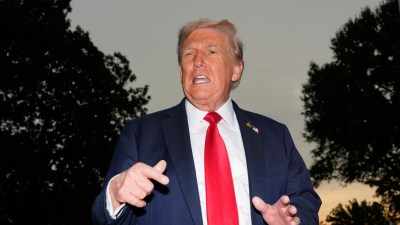LS spending little time discussing important matters
NEW DELHI, NOV 19: Parliament begins yet another session tomorrow with a heavy economic agenda on its hands. What is not very apparent tho...

NEW DELHI, NOV 19: Parliament begins yet another session tomorrow with a heavy economic agenda on its hands. What is not very apparent though, is that the time devoted to debates and discussions, not to mention the quality, is on an alarming decline.
A look back at the past decade is revealing. Since the early 1990s when the country took to liberalisation and globalisation, parliamentarians are spending increasingly lesser number of hours to transact financial and legislative business. If in 1993 the Lok Sabha sat for 569 hours, the time dipped sharply to 437 hours spread over 64 days in 1998.
While outside, politicians don’t tire of lecturing the country on the ills ofeconomic reforms, inside Parliament they haven’t had time for debate. Not only has the number of sittings come down but also the time spent in transacting financial and legislative business, as figures would show.
The Lok Sabha sat for 89 days in 1993, 77 in 1994, 78 in 1995, 70 in 1996, 65 in 1997 and 64 in 1998. It came down to just 24 days in 1999 though in this case it was because the House had stood dissolved prior to the holding of general elections. And as far as law-making and economic agenda are concerned, while the first Lok Sabha (1952-57) had spent 67.3 per cent, 10th Lok Sabha (1991-96), 11th (1996-97) and 12th (1998-99) could spend just 39.56 per cent, 33.35 per cent and 29.17 per cent respectively of its total time on these two important activities taken together.
According to a study by Parliament: “Over the years there has been a gradual decrease in the number of ministries and departments whose demands for grants could be scrutinised and in the total time taken for such scrutiny on the floor of the House. This indeed is a matter of concern, as no legislative body can afford to overlook its primary responsibility of law-making and scrutinising the budget proposals.”
In fact, the decrease has been so dramatic that in 1992 the demands for grants of only eight ministries were discussed as against 15 in 1985. It was only in 1993 that 17 department-related standing committees were constituted in April 1993 to look into the demands.
If this is the story of the country’s highest law-making body, the record of the state legislatures is even worse. The legislative assemblies of biggerstates like Uttar Pradesh and Bihar with 426 and 325 members sat for just an average of 24 and 32 days respectively in a year since 1993. Of the 32 legislatures, those of Arunachal Pradesh and Sikkim met for the lowest number of days (less than 10) while those of Kerala, Orissa and West Bengal came in the highest bracket (over 50 days).
The record has been this bleak despite the successive all-India conferences of presiding officers expressing concern over the shrinking days of sessions in various legislatures. At one such conference in 1997, a resolution was adopted calling upon the smaller states to hold their Assembly sessions for at least 60 days in a year and the bigger states for at least 100 days. But the resolution has more or less remained a dead letter.



- 01
- 02
- 03
- 04
- 05




























